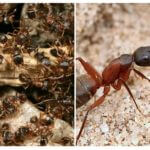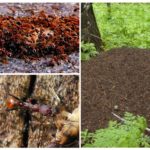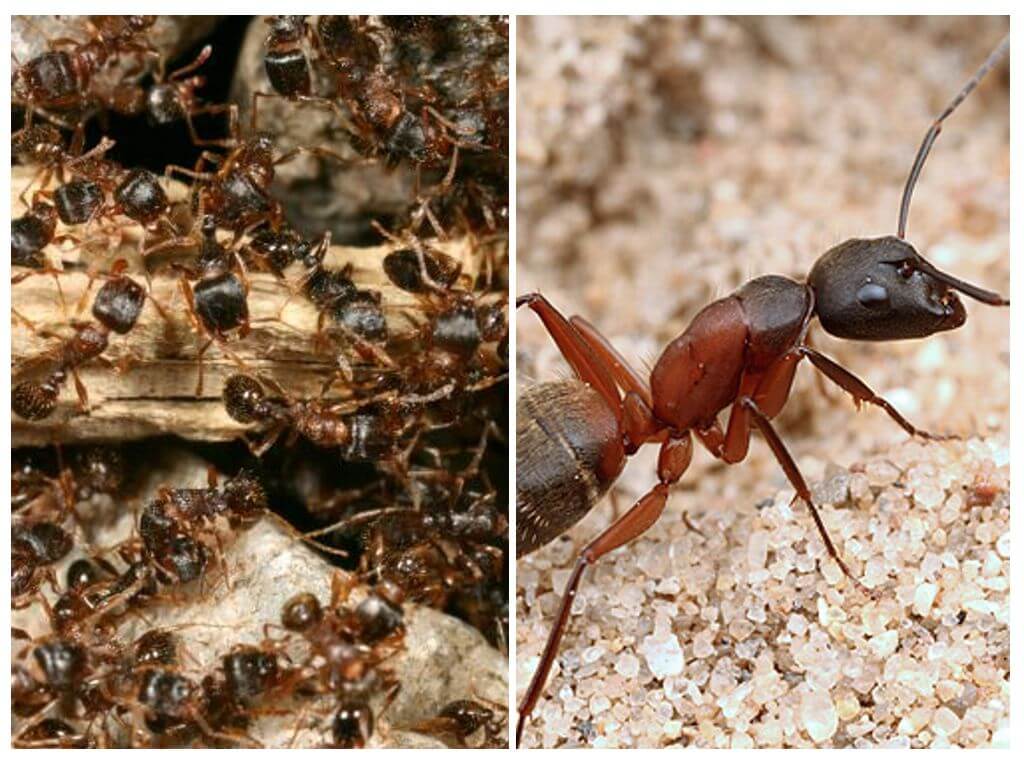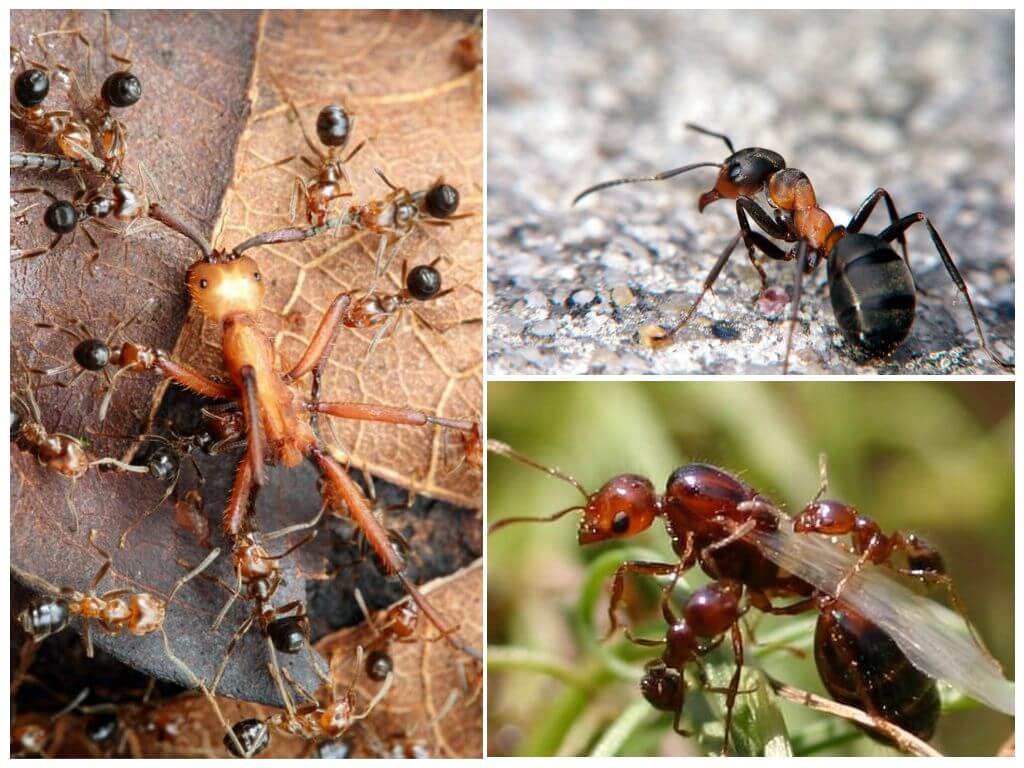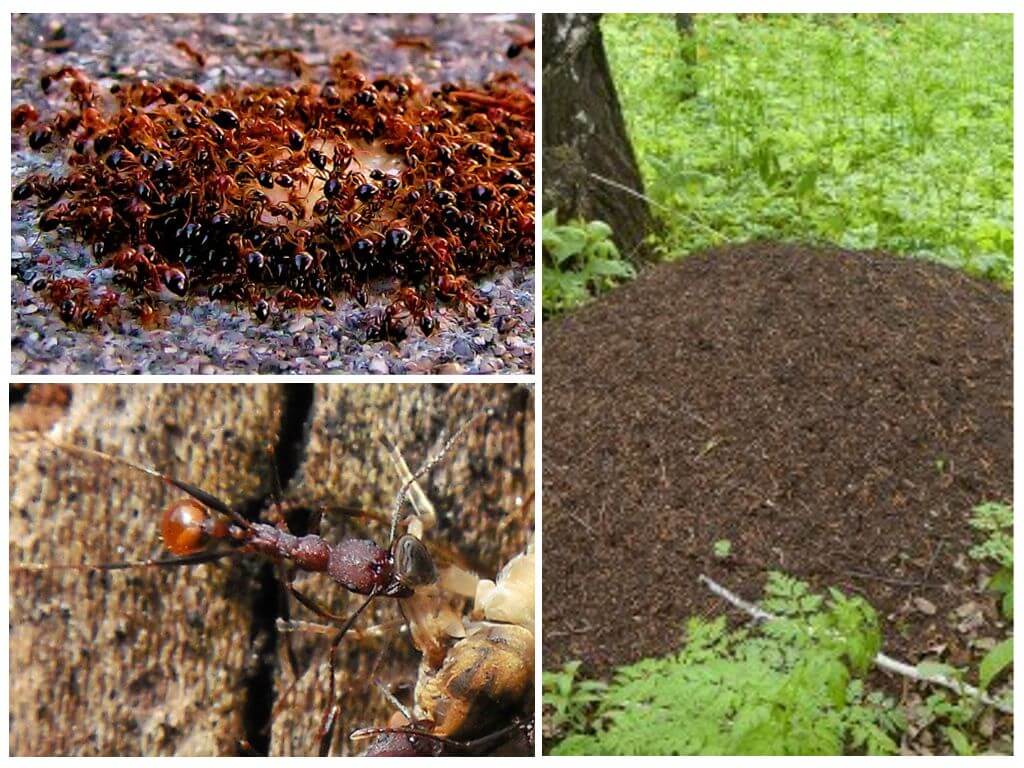Forest red ants
Content
- Forest red ants
- Forest ant life
- Anthill and ants
The forest redhead ant is one of the most common inhabitants of Eurasia. It can be found not only in the south of Great Britain and in Russia, but also in the Alps and even in the Caucasus. Familiar with him and the inhabitants of North America. This public insect belongs to the order of hymenoptera of the Formica genus. Representatives of this species lead a communal lifestyle, the Anthill of red forest ants is inhabited by individuals of the male and female sex, as well as workers (females whose ovaries have not developed).
Special features
Redheads, or as they are called red forest ants, prefer to settle in coniferous, deciduous or mixed forests. According to the description, this is an ordinary ant: it differs from a domestic red ant pest, which often gets into a house, only in size. Insects of dense build can reach up to 14 mm. The bottom of the head and chest are reddish brown in color, the abdominal part is black and shiny.
Red ants have a convex trapezoid clypeus and 2 pairs of webbed wings. On the head are faceted eyes that are not distinguished by good vision. The organ of touch is the long antenna whiskers. The presence of stereoscopic sense of smell allows the insect to perceive aromas in volume. The stalked abdominal part hides a gland filled with a special secret substance. The powerful muscles of an ant are able to throw out a secret not a single ten centimeters. Photos of forest red ants are presented below.
Anatomical differences are pronounced in forest red ants: in black winged males legs of yellow or red color. They have a more elongated belly and small head.A distinctive feature of females is the red-brown shade of the head, chest and stalk of the abdomen.
On a note!
The presence of wings in females is observed only during the mating season. After mating, the females gnaw them away, resulting in the weakening of the corresponding muscles.
The mirror-black abdomen has round shapes. Working individuals are the smallest, their body length does not exceed 9 mm. They have no wings, but there are mandibles.
Lifestyle
Throughout his life, the forest redhead ant works. Each individual performs a specific job: some build a dome anthill, others protect it, still others get food, and fourth guard the aphids. There are also individuals who care for the uterus. This job is equivalent to the most qualified. After all queen womb is the main element of the life of an anthill. It is a large-sized individual with well-developed ovaries, which is engaged only in laying eggs.
Interesting!
Males exist solely for mating, at the end of this process, they usually die.
Breeding
Forest ants begin to show activity in April.Departing from their nests, insects go in search of a partner. After fertilization, the female returns to her native anthill, where after a while she acquires a new family. Over time, the number of ants living in an anthill can reach up to 1 million individuals. When insects feel cramped, some of them leave for the base of a separate colony.
And it may happen that the fertilized female will wander into a strange anthill, where working individuals will protect her. Further events will unfold in a similar way.
The expectant mother can also wander into the forest ant of the brown ants and take the place of the queen-queen in the absence of such. After some time has already grown young offspring begins to manage the anthill on legal rights, rearranging the abode according to their preferences.
If in such an anthill there is its own uterus, then both forest queens get along well, mutually managing the farm.
Interesting!
Once paired, the female lays the egg-laying for the rest of her life (her life span can be up to 20 years).The female puts the eggs stuck together in one lump into a special chamber, and after several weeks larvae appear on the light. The process of their development in pupae takes up to 6 months.
Until the first working individuals appear, the uterus does not feed at all. For feeding the larvae, she uses the secretions of special glands and fat reserves, which she managed to stock up earlier. The female can feed the largest larvae even with a part of the laid eggs.
The first working individuals of forest red ants, who came into the world, went outside and sent to food quest. From this point on, the uterus deals only with the reproduction of eggs. All duties are assigned to worker ants.
Interesting!
During the season, the anthill is replenished by offspring of the same sex: either females or males. That avoids closely related relationships.
With the arrival of winter, forest red ants try to get into the deepest part of the anthill, where it is much warmer than on its surface. Gathered in a tight lump and numb insects overwinter in this state until spring.
What is an anthill
On a large anthill in the forest had come across many of us.Sometimes its height can reach up to 2 m. Such red-headed ants build cone-like shelters out of the ground, small branches, as well as food remains carried out. As a result, the anthill does not get wet even during heavy rain.
The waterproof exterior of the ant house allows you to maintain the required level of humidity inside. The consequence is that the decay and decomposition of those plant elements that make up this structure, which actually contributes to the heating of ant housing. The forest redhead ant is a real clean-up; it regularly removes its home from unwanted food debris, dry egg shells, as well as dead individuals.
When the necessary microclimate is maintained in a structure that has reached a certain size, the working individuals of red ants begin to build inside it chambers for keeping larvae, storing food and wintering. Such forest structures bring great benefits to the environment: the soil is enriched with useful substances and the improvement of its structure. The stumps inhabited by ants smolder and decompose much faster.
Nutrition
The food of the forest red ants are various insects and invertebrates. It is surprising that not only living insects eat forest dwellers, they do not disdain corpses. Protein food serves as food for the larvae. Adults eat carbohydrate food, usually these are excretions of sucking insects (shields, cicadas).
Especially red ants love the pad (sweet discharge of aphids). They breed aphids and even take her with them to the anthill for the winter. Exactly because of this reason the appearance of these insects in the garden causes many summer residents to panic. With great pleasure they consume red forest ants and vegetable juices, mushrooms, as well as seeds.
All ant prey is distributed equally among all inhabitants of the anthill.
Do forest dwellers have enemies
A lot of forest workers have enemies who eat ants. Various birds and insectivorous animals pose a serious danger to them. In addition to the red ants themselves, other insects can inhabit the anthill: lomechuza beetles feeding on anthill broods, stafilin beetles, eating the remains of an ant table, and parasitic mites.

